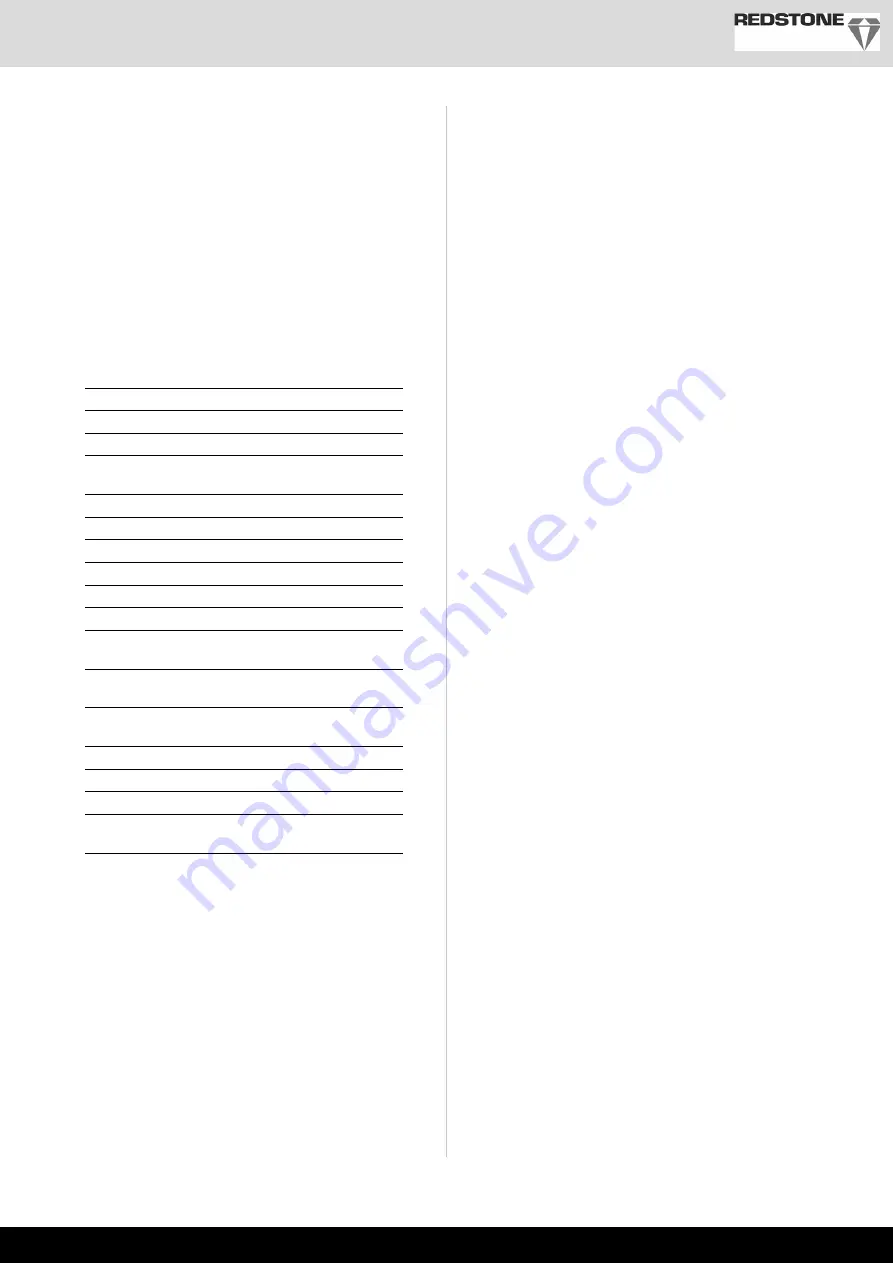
GB | 21
• Install the compressor near the point of consump-
tion.
• Avoid long air lines and supply lines (extension ca-
bles).
• Make sure that the intake air is dry and free of dust.
• Do not deploy the compressor in damp or wet ar-
eas.
• Operate the compressor only in suitable areas (well
ventilated, ambient tempe5°C to 40°C).
There must be no dust, acids, vapours, explosive
gases or inflammable gases in the room.
• The compressor is designed to be used in dry
rooms. It is prohibited to use the compressor in ar-
eas where work is conducted with sprayed water.
• The oil level in the compressor pump must be
checked before commissioning.
8. Attachment and operation
m
Attention!
Always make sure the device is fully assembled be-
fore commissioning!
You require the following for assembly:
• 2 x open-ended spanner, 17 mm (not included in
the scope of delivery)
• 2 x open-ended spanner 14 mm (not included in the
scope of delivery)
8.1 Fitting the wheels (fig. 5)
• Fit the wheels (11) provided as shown.
8.2 Installing the foot (2x) (fig. 6)
• Fit the feet (2x) provided as shown in.
8.3 Installing the air filter (2x) (fig. 7, 8)
• Remove the transport plug (A) and screw the air
filter (14) to the device.
8.4
Replacing the transport lid (B) (fig. 9, 10)
•
Remove the transport lid (A) of the oil filler hole (18).
• Fill the compressor oil supplied into the compres-
sor pump housing and fit the enclosed oil plug (15)
into the oil filler hole (18).
8.5 Mains connection
• The compressor is equipped with a mains cable
with protective contact plug. This can be connected
to any mains socket 230 V~ / 50 Hz with an earth
contact and that is protected at 16 A.
• Before commissioning, ensure that the mains volt-
age matches with the operating voltage and the
machine’s power rating on the type plate.
• Long supply cables, extensions, cable reels, etc.
cause a drop in voltage and can impede motor
start-up.
• In the case of temperatures below +5°C, motor
starting can be endangered by sluggishness.
8.6 ON/OFF switch (fig. 2
)
• Pull the ON/OFF switch (16) upwards to switch on
the compressor. Press the ON/OFF switch down to
switch off.
• The regulatory authority can instruct necessary
monitoring measures in individual cases.
• A pressure vessel must not be operated if it exhibits
a defect that poses a danger to personnel or third
parties.
• Check the pressure vessel for rust and damage
each time before use. The compressor shall not
be operated if the pressure vessel is damaged or
rusty. If you discover damage, please contact the
customer service workshop.
Keep these safety instructions in a safe place.
6. Technical data
Mains connection
230 V ~ 50Hz
Motor output in W
2200
Operating mode
S1
Compressor speed
2850 min
-1
Pressure vessel volume (in
litres)
50
Operating pressure
approx. 8 bar
Theo. Intake capacity l/min
approx. 412
Sound power level L
WA
97 dB(A)
Sound pressure level L
pA
71.2 dB(A)
Uncertainty K
WA
2.03 dB
Effective air output rate (FAD)
272 l/min.
Minimum working temperature
(T
min.
in °C)
- 10° C
Maximum working temperature
(T
min.
in °C)
+ 90° C
Type and serial description or
number of the container
CE
5
0B
Protection category
IPX2
Device weight in kg
approx. 41
Oil (15W 40) l
approx. 0.25
Max. altitude (above mean sea
level)
1000 m
The noise emission values have been determined in
accordance with EN ISO 3744.
Wear hearing protection.
Excessive noise can result in a loss of hearing.
7. Before commissioning
• Before connecting the machine, make certain that
the data on the type plate matches with the mains
power data.
• Prior to initial commissioning, remove the transport
plug (B) and fill the compressor pump housing with
oil as described in item 8.4.
• Check the device for transport damage. Report
any damage immediately to the transport company
which was used to deliver the compressor.
Summary of Contents for 5906101924
Page 2: ...2...
Page 3: ...3 ON OFF 2 15 16 1 16 12 2 8 9 10 1 4 6 3 5 7 14 13 11 3 7 17 5 14 14 17 1 17 2 17 3 3...
Page 4: ...4 20 15 14 19 21 22 9 20 23 24 24 25 11 11 4 14 20 22 19 21 5 11 9 6 A 7 14 8 B 9...
Page 5: ...5 15 18 10 m i n m a x 12 11 C D E G 12 C D E F 13...
Page 35: ...GR 35 dB...
Page 36: ...36 GR 1 37 2 37 3 37 4 38 5 38 6 40 7 41 8 41 9 42 10 42 11 44 12 44...
Page 38: ...38 GR 3 4 5 6 7 8 9 10 11 12 4 272 l min 5 m m 1 2...
Page 39: ...GR 39 20 21 22 7 bar 23 24 30 mA m 2 50 m 13 14 15 16 17 18 19...
Page 44: ...44 GR 12 5 C 17 10 5 10 9 11 2012 19...
Page 55: ...55...






























